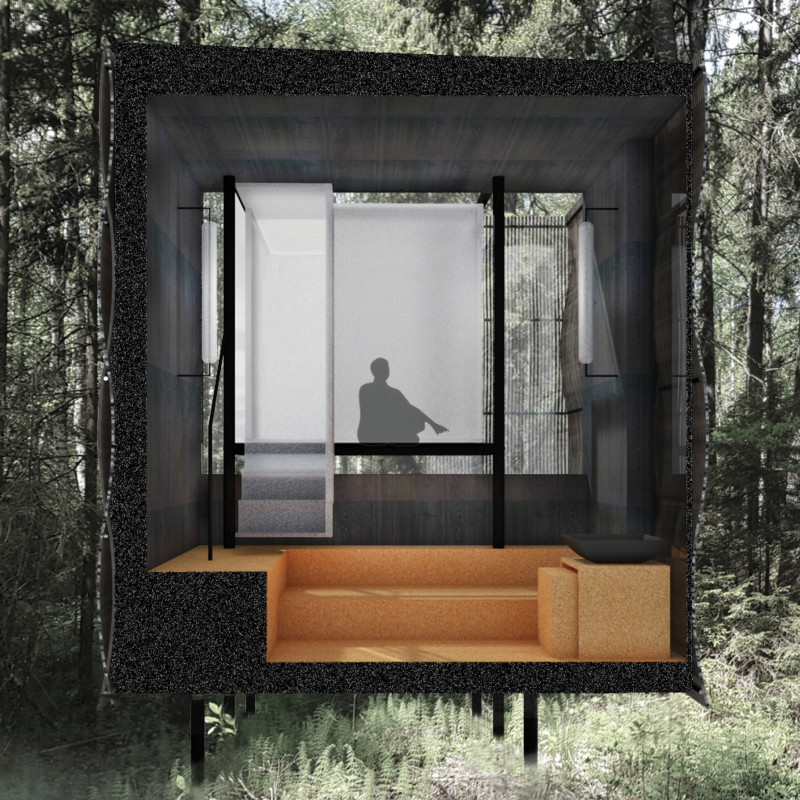5 key facts about this project
Pitter-Patter is an architectural design that focuses on creating a strong connection between living spaces and the natural environment. Elevated on slender stilts, the rectangular structure includes a floating meditation box that encourages harmony with its surroundings. The overall design highlights the importance of interacting with nature while providing a comfortable and usable space.
Design Layout
The layout of Pitter-Patter has been designed for ease of movement and functionality. A solid, right-angled door provides access to the building, fitting seamlessly into the facade. Once inside, a series of steps wrap around the sleeping and sitting area, allowing for smooth transitions between different spaces. These steps double as seating and storage, making efficient use of the compact interior.
Meditation Space
The focal point of the design is the meditation space, presented as a frosted glass box that seems to float. This feature serves both practical and aesthetic purposes, linking the interior environment with the outside world. The muted transparency of the glass allows gentle light to enter, creating a calming atmosphere while maintaining a sense of privacy. This separation from the living area provides opportunities for quiet reflection and a deeper connection to the landscape.
Materiality and Sustainability
Wood and metal are the primary materials used in the design, chosen for their practical and visual qualities. Wood adds warmth and a natural feel to the structure, which is in line with traditional Latvian architecture. Metal provides necessary support, ensuring the building's durability. Features such as a central fireplace and a sink that collects rainwater underscore the project's focus on sustainability and efficient resource use.
Final Design Detail
An exterior bench located beneath the meditation box invites users to engage with their surroundings. This simple design choice encourages users to pause and appreciate the landscape, enriching their experience of tranquility and balance. Such elements are key to cultivating a meaningful relationship with the environment, allowing for moments of reflection and connection with nature.






















































